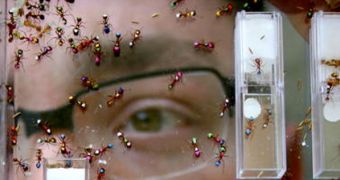For many years, researchers have been wondering as to what exactly causes the intriguing relations that develop between the size of an organism and the rate at which its metabolism runs. Now, a team of scientists believes it may have discovered an explanation.
Inside complex organisms, metabolic rates are used as indicators as to how fast the so-called “fire of life” is burning within.
Each animal can reproduce, rune, breathe and perform a myriad of other processes, and all of them create a measure known as metabolism, depending on how fast or how slow the take place.
Take an elephant and a hummingbird, for example. While the former needs time to digest its food, and can live for a century, the latter needs to eat all day long, and have a much shorter life span.
Generally, scientists tend to agree that metabolic rates increase as the size of an organism decreases. What they don't know is why this happens, and this is where the new study comes in.
According to investigators at the Arizona State University (ASU), it would appear that social evolution plays a crucial role in determining the balance of an organism's energy equation.
The investigation that led to the new conclusions was carried out on colonies of the seed harvester ants Pogonomyrmex californicus. The work is detailed in the latest issue of The American Naturalist.
ASU professors Jennifer Fewell and Jon Harrison, working together with graduate students James Waters and C. Tate Holbrook, determined that the total metabolic rate of ant colonies could not be accurately predicted using standard methods.
This means that the measure was not immediately derived by summing up the metabolic rates of all members in the colonies. It was determined that large ant colonies, for example, consume less energy than smaller ant colonies living in the exact same conditions.
The work seems to point at two main conclusions. One of them is that colony size and metabolic levels are connected through the same scaling measure that connects the size of a single body of metabolic rate.
This is another way of saying that the ant colony behaves like a single organism, the experts say.
The second conclusion is that colony size influences patterns of behavior and the amount of energy individual ants expend.
The team members were based at the ASU School of Life Sciences, and at the College of Liberal Arts and Sciences (CLAS) Center for Social Dynamics and Complexity
“It's hard to figure out, on a mechanistic level, why size affects metabolic rate because it's not easy to change an animal's size,” says Waters, the lead author of the journal entry.
“With a colony though, it's as easy as adding or removing individual ants […] and since these super-organisms show the same scaling pattern as individual animals, the basic energy regulation mechanisms could be the same, either for distributed systems like these colonies or more physically connected systems such as individuals made up of many cooperating cells,” he adds.

 14 DAY TRIAL //
14 DAY TRIAL //